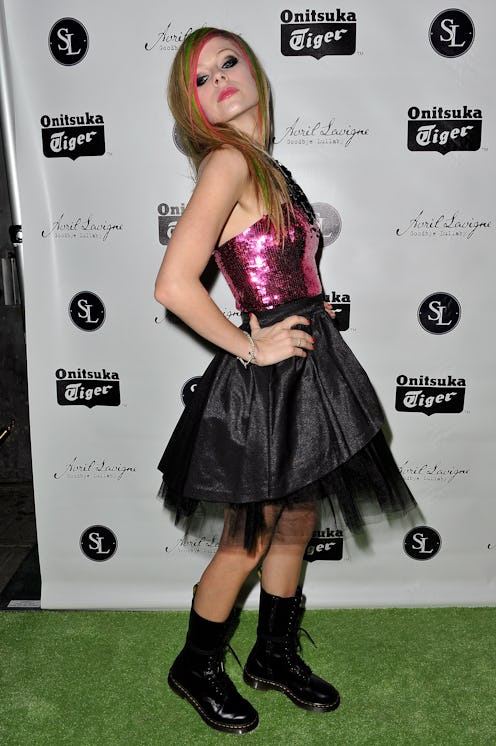Fashion
How Avril Lavigne's Style Helped Me Embrace Myself
From a young age, I could tell that I was much different from the other girls around me. I hated dressing like my friends, who would so often be decked out in pink dresses or jumpsuits and patent leather Mary Jane's. Before Avril Lavigne's style came to my attention circa the early 2000s, my own aesthetic remained a mystery to me. I just couldn't manage to feel comfortable in much of the clothes housed in the little girls' sections of department stores.
As a young genderqueer person who, like many of us, was raised to act and perform as a cisgender girl, I didn't know I had other options besides what I saw my favorite pop princess Britney Spears rock. But after seeing Lavigne's music video for "Complicated" back in 2002, everything changed. By channeling the pop punk Canadian singer, I experimented with androgynous fashion for the first time: A moment that came to shape me as both a fashion-loving human and a gender-nonconforming person.
Since everything I had seen in pop music as an elementary school kid included typical representations of femininity (pink belly shirts, crimped hair, frosted lip gloss), discovering Lavigne was a big deal. Not only did I spend hours on end learning the words to all of her moody songs, but I adopted a new persona inspired by her affinity for men's shorts and beat-up Converse. Because of her, I was able to experiment with the masculinity that was missing from my sartorial repertoire.
In an effort to recreate her look, I convinced my mom to buy me my first pair of black high-top Converse. I experimented with my mother's black smudge eyeliner, often applying way too much under my eyes. I started wearing the multiple pairs of boys' pants and shorts I owned from all the times my mom had to buy me new bottoms in a hurry after my frequent accidents at public playgrounds (apparently, the boys' section was always closer to the front of the stores). I stole my some of my dad's boxers and my grandpa even gave me some neckties he wasn't using anymore, knowing I was on the hunt for some of my own.
Once I had my desired wardrobe — black nail polish, sweat wrist bands, and all — I confidently debuted my new look. With it came a new attitude: A more masculine identity I finally felt entitled to adopt for myself.
Lavigne really made it a point to embrace her "tomboy" identity, boldly rejecting classic femininity in her videos and on the red carpet alike. Her pop/punk wild child aura may not have been intended to help gender fluid individuals embrace themselves, but seeing someone like Lavigne become so huge in the media was crucial nonetheless. It was through her — and through imitating her style under the guise of pure fandom — that I could begin to come into my own. I had always felt masculine, but adopting a more masculine-inspired aesthetic was the missing piece in my journey towards feeling more comfortable in my own skin.
Unfortunately, my new Lavigne-inspired sense of style definitely ostracized me at my elementary school in the Bronx. Not having lived in a very queer-friendly area, most of my peers thought it odd that I dressed like a boy, and my outfits warranted many judgmental stares from their parents. It made me feel incredibly insecure to know that no one around me could bring themselves to accept my masculine identity or presentation. But when I moved to a small town in upstate New York at age 10 and started school there, things evolved for the better.
Inspired by my mother's feminine "Sunday's best" look, I put my own spin on her aesthetic on my first day of school by utilizing ripped-up fishnet tights, a plaid skirt, and a band tee. Thanks to a bike accident I had had the week before, I was also covered in cuts, bruises, and bandages. Determined to stay true to myself while channeling Lavigne's rebellious punk aesthetic, I got to start fresh. And by the end of that first day, I had solidified my social identity as the tough kid from the Bronx who took no shit.
Crafting a foundation of confidence surrounding my masculine identity was crucial in order to come to terms with my fluid gender. For a while — before I was empowered by the queer community and the knowledge of what kind of masculinity was most satisfying for me — Lavigne's punk and wild child aesthetic proved to be essential in my discovery of what presentation (and later gender identity) made me feel the most comfortable.
I may not agree with younger Lavigne's use of the word "tomboy," but embracing her sense of style really helped me understand that I could be the boy I deserve to be, regardless of what genitals I was born with.
